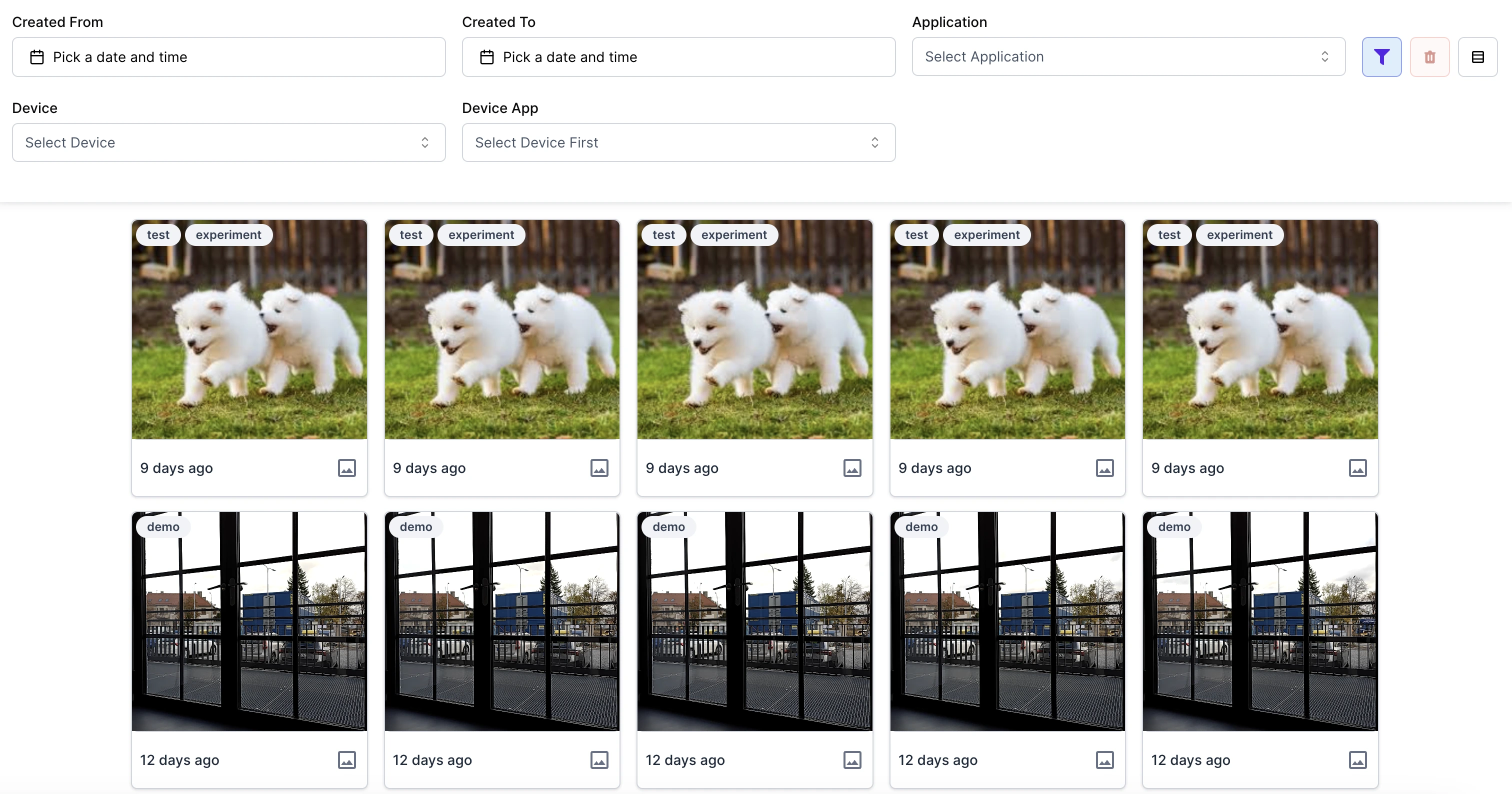Snaps
- Record and analyze events detected by your devices in the field.
- Feed real-world data into analytics pipelines for pattern recognition and performance validation.
- Collect and label images or videos to continuously improve the AI models running in your applications.
- Each Snap represents a discrete event or capture (for example,
"image","data_collection", or"inspection_event"), and you'll typically reuse the same Snap name across many captures. - A Snap can include one or more attachments, such as still images, video sequences, or stereo data.
- To make Snap management at scale easier, each Snap supports tags and extras (simple
key:valuepairs that help organize, search, and filter your captured data).

How to Create Snaps
Data Gathering App
The easiest way to get started — no coding required. Install from the Hub App Store, start capturing from your OAK device, and your Snaps will automatically appear in Luxonis Hub. Useful for initial data collection.
Snaps Producer (DepthAI Integration)
Ideal for building basic custom apps. Use Snaps Producer directly from DepthAI nodes to emit Snaps programmatically.
Direct DAI Integration
For full control and advanced customization. Integrate Snap creation directly into your application logic using the DepthAI API.
Organizing and Searching Snaps
- Tags, used for grouping related Snaps (e.g.,
night,validation,dataset_v2). - Extras, arbitrary key-value pairs for searchable metadata (e.g.,
scene:warehouse,lighting:low).